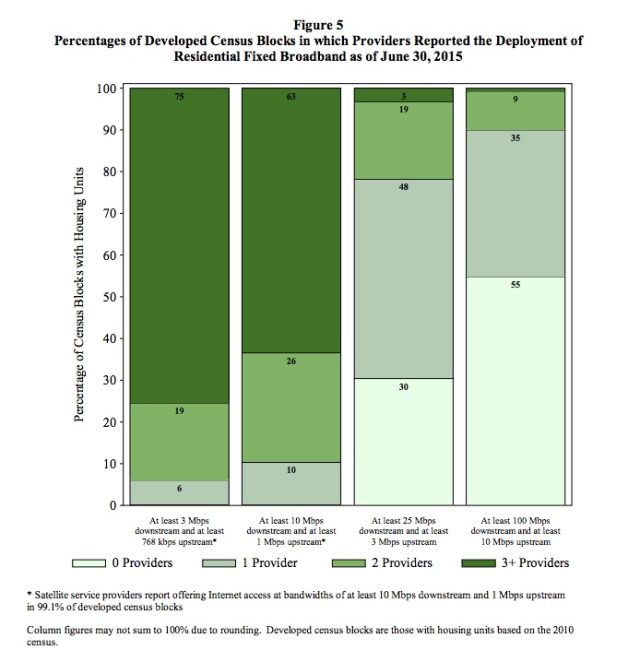I agree that comparatively few customers have access to 25 mbps broadband, as the map on your link shows. If, instead, the map showed that most people can get 25 mbps, but few can get 100 mbps, would you continue to claim that Americans have insufficient access to broadband? You can keep raising the number until you reach a point where most people can't get that number. Why is 25 mbps the target? 25 mbps is fast enough for five simultaneous high-definition Netflix streams. Is it some kind of market failure if a lot of people can't do that? How many people want to? How many are willing to pay for that level of service? Netflix is the runaway leader of streaming services, serving some 50 million U.S. households. 50% of households subscribe to any video-on-demand service. So half the country may not even be willing to pay for the 5 Mbps needed to stream HD, or 3 Mbps for SD video. I'll start with the "For more information" link from your source. As usual, to understand what's going on you have to dig into a long, tedious PDF. From page 6: So the FCC defines mom, dad, and the three kids each watching their own HD movie all at once as "advanced" broadband, that's fine. I think it is a lot more bandwidth than many households are willing to pay for. What's the outlook for a more basic broadband, say enough to watch just one or two movies at the same time, or perhaps just use Facebook and do some job-hunting? The latest Internet Access Service Report was published in April. (The FCC budget, by the way, was perfectly constant from 2014 to 2017, with some extra funds for moving headquarters added in 2016-17. It has been pretty nearly constant since 2009.) Page 6 has a chart like this one, from a 2016 article. The numbers in this year's report have improved. For 10 Mbps, enough to watch three simultaneous SD movies or two in high definition, 79% of developed census blocks have three or more ISPs to choose from. A census block is not the same as a household, but I haven't found more granular data. Another 18% have two providers, for a total of 97% of census blocks with choice in ISP. For those who are willing to give up high-definition, and are content to watch one movie at a time, or simply choose not to subscribe to video on demand, 90% have three or more providers, 10% have two. I think you may be overestimating the level of service many households are interested in paying for.Now it's your turn to provide a source.
In the 2015 Broadband Progress Report, the Commission increased the speed benchmark for advanced telecommunications capability to 25 Mbps/3 Mbps, up from the 4 Mbps/1 Mbps benchmark used in the previous three Reports. In setting the benchmark, the Commission took into account the needs of multiple users in the average household, as well as the speeds required to use high-quality video, data, voice, and other broadband applications.
